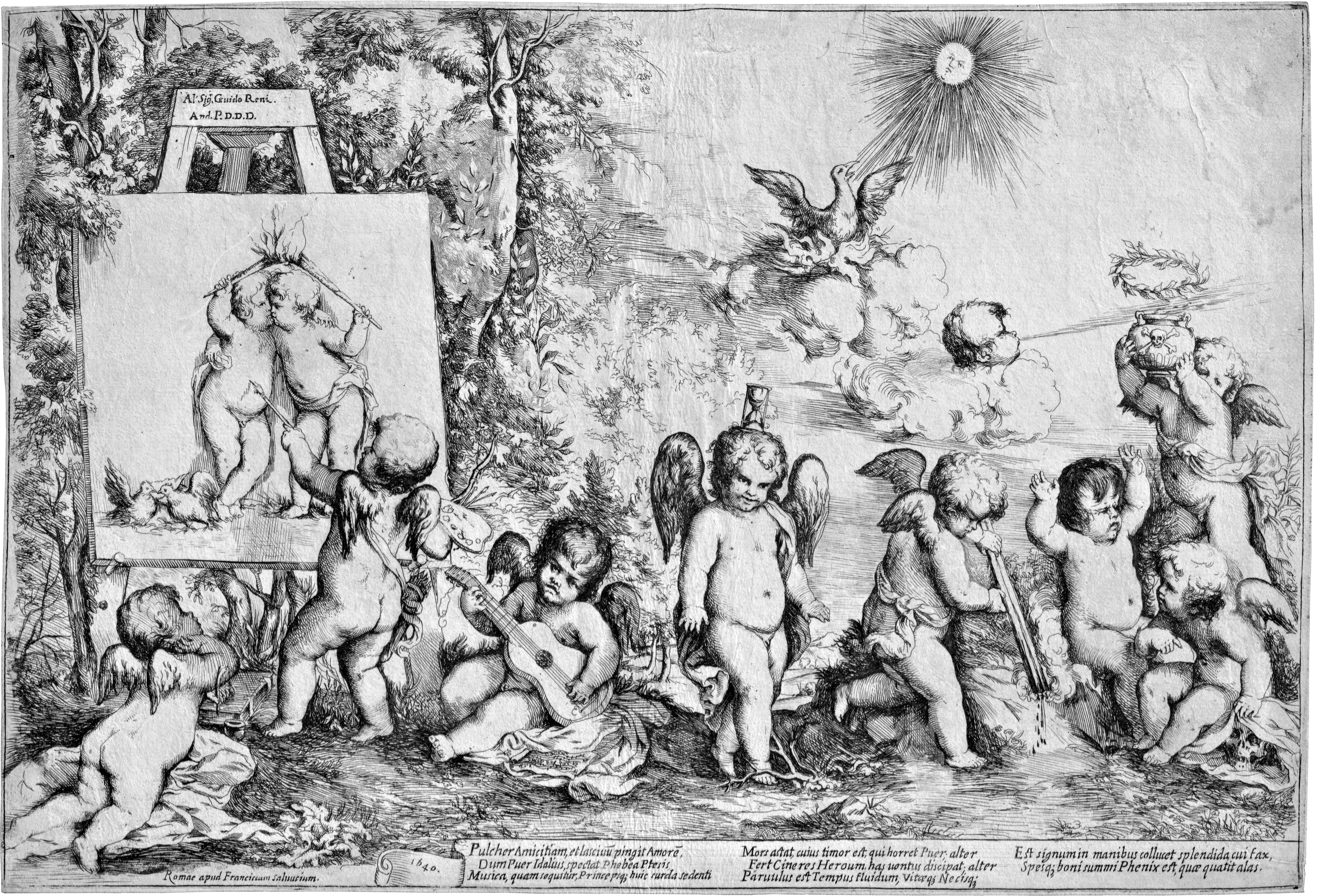Loading the page ...
Giovanni Andrea Podestà
(Genoa circa 1615 – Rome 1674)
Allegory of the Arts. Etching. 26.2 x 38.8 cm. 1640. Bartsch 5, TIB (Commentary) .005 S1 (of S4). Catalogue Italian Etchers of the Renaissance and Baroque, edited by S. W. Reed and R. Wallace, Museum of Fine Arts, Boston 1989, cat. no. 136, p. 260f.
Little is known about the life and work of the painter and etcher, Giovanni Andrea Podestà. Having studied under Andrea de’ Ferrari and Domenico Fiasella in his native Genoa, he went to Rome around 1630. There he belonged to the circle around Cassiano dal Pozzo, to whom he dedicated a print, and worked as an etcher and painter in the tradition of Titian and Poussin. In 1650 he was admitted to the Accademia di San Luca and in 1661 collaborated on the inventory of Cardinal Mazarin’s collection of paintings. Podestà’s printed oeuvre comprises seven definitively attributed etchings, three after Titian and four after his own designs, all showing putti in bacchanalian scenes or allegories.
The present elaborate, light-hearted scene dedicated to Guido Reni includes an allegorical painting of love and friendship that is in the making on the left of the picture. The artist is a Cupid with brush and palette, who is accompanied by a writing and a music-making cherub respectively. The arts are inspired by love and friendship. All the while, however, time slips by in the hourglass on the head of the putto in the middle, a theme which is taken up further to the right, where other putti play with symbols of death: an upturned torch, a skull and an urn. High above the cherubs Phoenix burns in the rays of the sun. Below this symbol of immortality, the caption says, the wind’s breath scatters the ashes from a hero’s laurel-wreathed urn. The scene can thus be construed as an allegory of immortalisation in artistic glory. Executed in Podestà’s animated and refined etching style, this rare sheet is remarkable for its rich detail and original invention. A superb, contrasting early impression, before the change of the publisher’s address. With thread margins around the platemark, to which it is trimmed on the left. Minor ageing and slight handling traces, otherwise in immaculate, pristine condition.
Contact us for further information